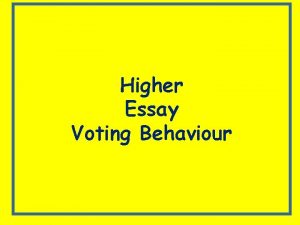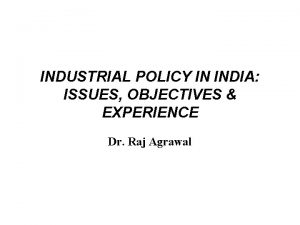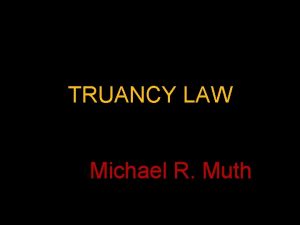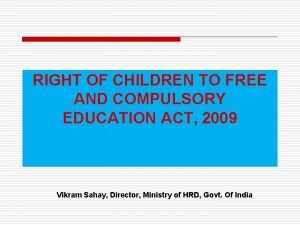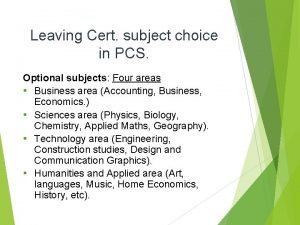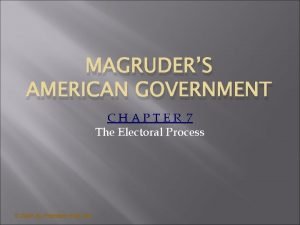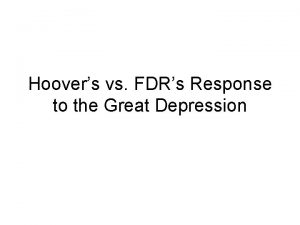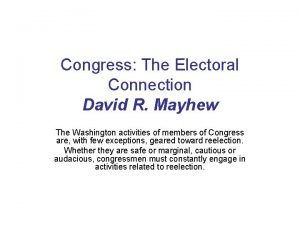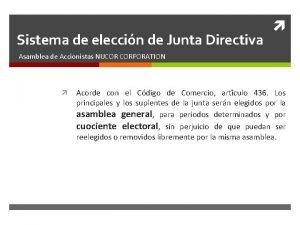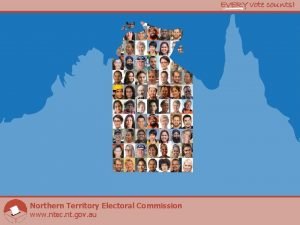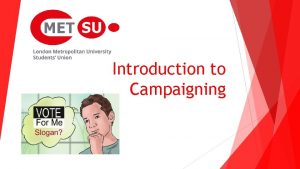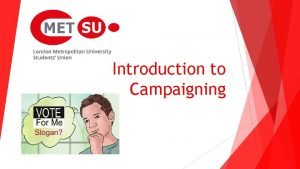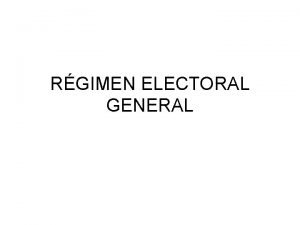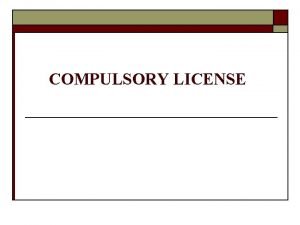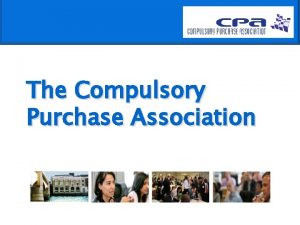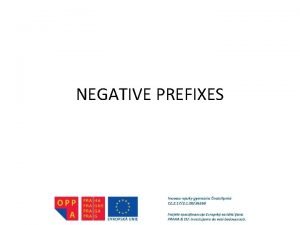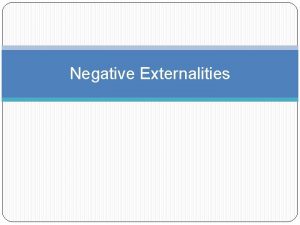Electoral Reform Negative Campaigning Postal Voting Compulsory Voting




















- Slides: 20

Electoral Reform Negative Campaigning, Postal Voting, Compulsory Voting, Adopt PR? Monday 21 st April Amilia Rappak

Overview • Electoral reform in a 21 st century context • Areas where reforms have an impact • Case study: low voter turnout and the reforms suggested to target this • Compulsory Voting, Postal Voting • Conclusion – do reforms work?

Some questions about electoral reform • Do reforms always only target one area of society? • Can you think of any reforms that will affect society as a whole?

Electoral Reform in the 21 st Century • We benefit from past reforms • 19 th Century – Property restrictions are gone – The wealthy cannot ‘buy’ elections • 20 th Century – Women get the vote • But what about today?

Electoral Reform: Why? • Engage more people in the political process – Low turnout is bad for democracy – Include minority groups • Make elections fairer – True representation of political attitudes – Campaign financing – PR?

Electoral Reform: Why? • Make voting easier – vote counting procedures, – ballot design, etc… – the average voter can understand the system – Transparency • Equalise competition – constituency borders – incumbents’ advantages…

• Legal Electoral Reform: How? – Amend the constitution – Change the legal framework • Administrative – Make the electoral system more efficient • Political – Change the way politicians plan to win elections

Electoral Reform: Who wants it? • Electoral Management Bodies (EMBs) • Agencies, lobbying and pressure groups • Eg. The UK Electoral Commission – ‘The UK's electoral processes are rooted in nineteenth-century practices and legislation and need fundamental reform in order to safeguard public confidence’ (EC. Dec 2007) • UK examples: Electoral Reform Society, Make Votes Count Coalition, Fairshare, Aceproject. Org, etc.

Where to Reform? • Election management – Registration – Constituency boundaries • Election technology – Registration systems – Voting systems • Improve efficiency • Preserve integrity

What can be reformed? • Reforms to make voting easier (vote counting procedures, ballot design, etc…) • Reforms to make elections fairer • Reforms to equalise competition, giving candidates an equal chance • Reforms that aim to improve turnout

Groups that campaign for electoral reform in the UK • Electoral Reform Society (who campaign for fairer voting systems) • Fairshare (who campaign for the introduction of the Single Transferable Vote system in Scotland) • Make My Vote Count

Reforms that have been implemented or proposed • Implementation of Electoral Management Bodies – the body responsible for electoral management • Labour’s proposal to shift the electoral system to Alternative Vote in the UK • Conservatives desire to alter the constituency boundaries


Low turnout p. B + D > C • p the probability that an individual’s vote will affect the outcome of an election. • B the perceived benefit of that person’s favoured political party or candidate being elected. • D originally this stood for democracy or civic duty, but today it represents any social or personal gratification an individual gets from voting. • C the time, effort and financial cost involved in voting.

Verba et al. ’s most cited reasons for political inactivity: • lack of time (39%), • a belief that self and family came before politics (34%), • that politics had ‘nothing to do’ with the important aspects of the respondents’ life (20%), • that politics ‘can’t help with my personal or family problems’ (17%), • ‘as an individual I don’t feel I can have an impact’ (15%) and • ‘for what I would get out of it, politics is not worth what I would have to put into it’ (14%).

Trends of Decreasing Turnout

Negative Campaigning • ‘Dirty tricks’ – generally involve leaking damaging information to the media. Also, feeding an opponent’s team false information in the hope that they will use it and embarrass themselves. • ‘Push polls’ are attacks disguised as telephone polls– members of the opposing party are kept in the dark about this happening, making these tactics almost invisible and improvable.

Most open and often most effective technique of negative campaigning is running advertisements attacking an opponent’s personality, record or opinion.

Other methods used to tackle low turnout: • Compulsory Voting – Has kept turnout consistently high in countries such as Australia (94. 5%) and Belgium (93%) BUT holds the problem of ‘donkey voting’ and the question: is it democratic to force people to vote? • Postal Voting – Cuts the cost and ‘inconvenience’ of elections BUT do they actually encourage people to vote who would not have previously done so? • Proportional Representation – Makes the governing bodies more representative and leads to fewer wasted votes BUT can lead to unstable coalitions whose formation the voter has no say in.

Questions: • How can reformists get around the fact that reforms need to be implemented by the MPs who were put in power by the system under scrutiny? • Is it possible to develop reforms that would target society as a whole, rather than just one section of it? • Should people be forced to engage in politics?
 Voting behaviour essay
Voting behaviour essay Joint concept for integrated campaigning
Joint concept for integrated campaigning Industries requiring compulsory licensing *
Industries requiring compulsory licensing * Violation of compulsory attendance req parent, etc
Violation of compulsory attendance req parent, etc Four compulsory subjects
Four compulsory subjects Dua for concentration
Dua for concentration Salient features of rte act 2009
Salient features of rte act 2009 Right of children to free and compulsory education
Right of children to free and compulsory education How to make ghusul
How to make ghusul Pcs compulsory subjects
Pcs compulsory subjects Compulsory drug treatment correctional centre
Compulsory drug treatment correctional centre Chapter 7 the electoral process
Chapter 7 the electoral process Hoover v. fdr: responses to the great depression
Hoover v. fdr: responses to the great depression Materia electoral
Materia electoral Electoral connection definition
Electoral connection definition Ejemplo cuociente electoral junta directiva
Ejemplo cuociente electoral junta directiva Election machine
Election machine Ipeeg
Ipeeg Electoral college changes
Electoral college changes Cuerpo electoral significado
Cuerpo electoral significado Ntec
Ntec
